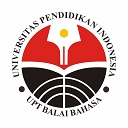Giving Reasons as Politeness Strategy in Refusal Speech Act: A contrastive analysis on Japanese native speakers and Indonesian Japanese learners refusal speech act
Abstract
Keywords
Full Text:
FULLTEXT PDFReferences
Beebe, L. M., Takahashi, T. & Uliss-Weltz, R. (1990) ‘Pragmatic transfer in ESL refusals.’ “On the development of communicative competence in a second language” Newbury House.
Ikeda, Y. (2009). Chuukyuu no koutou happyou hyougen wo nobasu shidou wo kangaeru-Gakushuusha no kotowari hyougen ni okeru `riyuu` wo megutte-. Nihongo to Nihongo kyouiku, 37, 155-175. Keiou gijuku daigaku: Nihongo/nihon bunka kyouiku senta.
Ito, E. (2005). The comparison of refusals to invitations in Malay cultural Sphere: on the order of utterance of the Javanese, the Indonesian, and the Malaysian Languages. Forum of International development studies 29, 15-27.
Jungheim, N. O. (2006). Learner and native speaker perspectives on a culturally-specific Japanese refusal gesture. IRAL-International Review of Applied Linguistics in Language Teaching, 44(2), 125-143.
Marui, I., Noro, K., Nishijima, Y., Reinelt, R. & Yamashita, H. (1996). Concept of Communicative Virtues (CCV) in Japanese and German. In: Hallinger, M. / Ammon, U. (eds): Contrastive Sociolinguistics (pp. 285-409). New York: Mouton de Gruyter.
Nishijima, Y., (2007). For a constrastive Study of Routine for Controlling Communicative Behaviors in German and Japanese: A Pilot Investigation. In Socio-Cultural Transformation in the 21st Century? Risks and Challenges of Social Changes” (pp 347-357). Kanazawa/ Japan: Kanazawa electric.
Nishijima, Y., (2010). Perspectives in Routne Formulas: A contrastive Analysis of Japanese and German. In Gendrin, D. (eds). Intercultural Communication Studies, 19(2), 55-63.
西村史子. (2005). 勧誘談話における断りの日英対照分析―言い訳に注目して―. 社会言語科学会16 回大会発表論文集,16-19.
西村史子. (2007). 断りに用いられる言い訳の日英対照分析. 世界の日本語教育. 日本語教育論集, 17, 93-112.
藤森弘子. (1995).日本語学習者に見られる「弁明」意味公式の形式と使用―中国人・韓国人学習者の場合―日本語教育, 87,79-90.
森山卓郎.(1990).断りの方略:対人関係調整とコミュニケーション.言語, 19(8), 59-66.
横山杉子. (1993). 日本語における「日本人の日本人に対する断り」と「日本人のアメリカ人に対する断り」の比較―社会言語学のレベルでのフォリナートーク―.日本語教育, 81,141-151.
DOI: https://doi.org/10.17509/japanedu.v4i1.17023
Refbacks
- There are currently no refbacks.
Copyright (c) 2019 JAPANEDU: Jurnal Pendidikan dan Pengajaran Bahasa Jepang

This work is licensed under a Creative Commons Attribution-ShareAlike 4.0 International License.
 Published by:
Published by: Department of Japanese Language Education, Faculty of Language and Literature Education
Universitas Pendidikan Indonesia
 Online ISSN: Online ISSN:2528-5548 |

JAPANEDU: Jurnal Pendidikan dan Pengajaran Bahasa Jepang (e-ISSN:2528-5548) lisenced under a Creative Commons Attribution-ShareAlike 4.0 Internasional (CC BY-SA 4.0)


